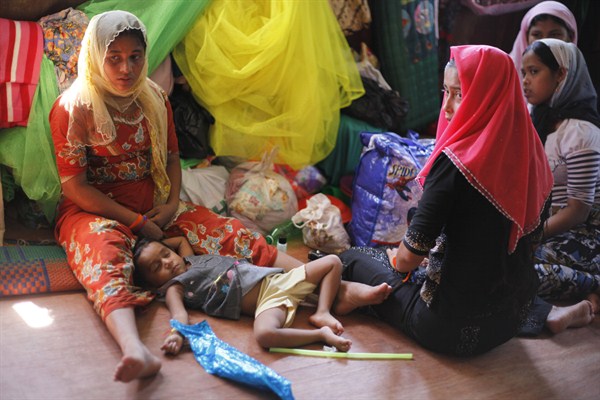Over the past month, Myanmar’s multiple domestic crises have spilled over its borders and into South and Southeast Asia, setting back the country’s reforms just before Myanmar’s highly anticipated national elections this fall. Rohingya Muslims fleeing violence and discrimination in western Myanmar have attracted the most global news coverage. Their plight in rickety boats with little food or water has sparked international calls for Myanmar’s government to take stronger measures to end discrimination against the Rohingya and address the crisis at its source.
But the flight of the Rohingya is just one issue undermining Myanmar’s stability. Fighting has flared again between the Myanmar army and ethnic Kokang rebels, known as the Myanmar National Democratic Alliance Army, based near the Chinese border. Since February, at least 200 people have been killed and more than 50,000 driven out of their homes by fighting between the Kokang and the Myanmar army. Meanwhile, in early June, conflict erupted along the Myanmar-India border between ethnic Naga rebels and Myanmar and India’s militaries. On June 4, Naga rebels ambushed an Indian army patrol, killing at least 18 Indian soldiers.
Yet the government of Myanmar’s president, Thein Sein, hailed just a few years ago for overseeing a transition expected to move from military dictatorship toward democracy, has been virtually mute on the Rohingya, the Kokang and the Myanmar-India border incident. With regard to the Rohingya fleeing the country, Myanmar’s leaders continue to try to cast doubt on the idea that there is a crisis at all. They’re not alone. Even the opposition National League for Democracy (NLD), led by Nobel Peace Prize laureate Aung San Suu Kyi and widely expected to win a majority in the lower house of parliament this fall, have until recently said little about these three crises. That underscores the intractability of these issues across Myanmar’s political spectrum and the complexity of the challenges ahead.

